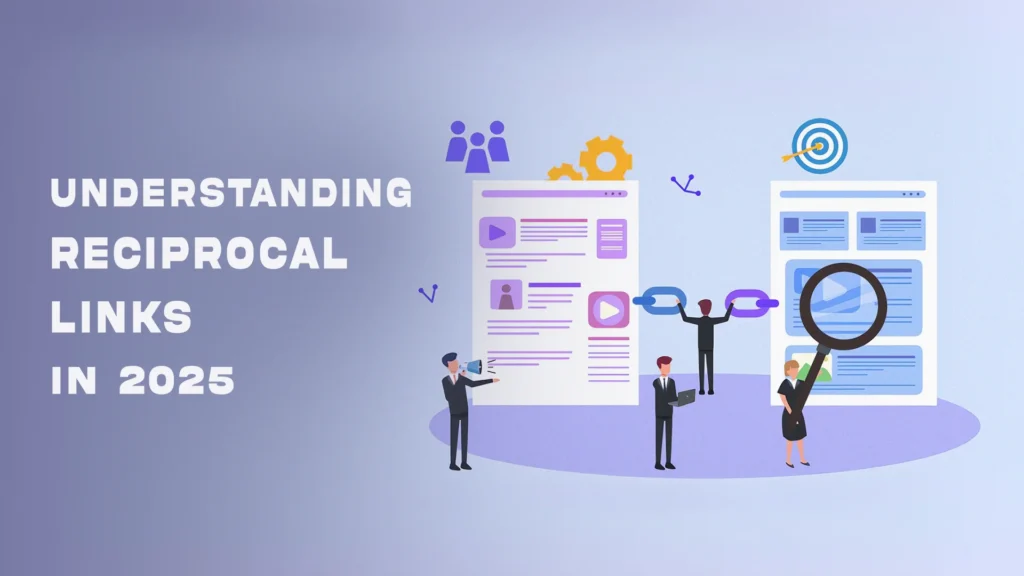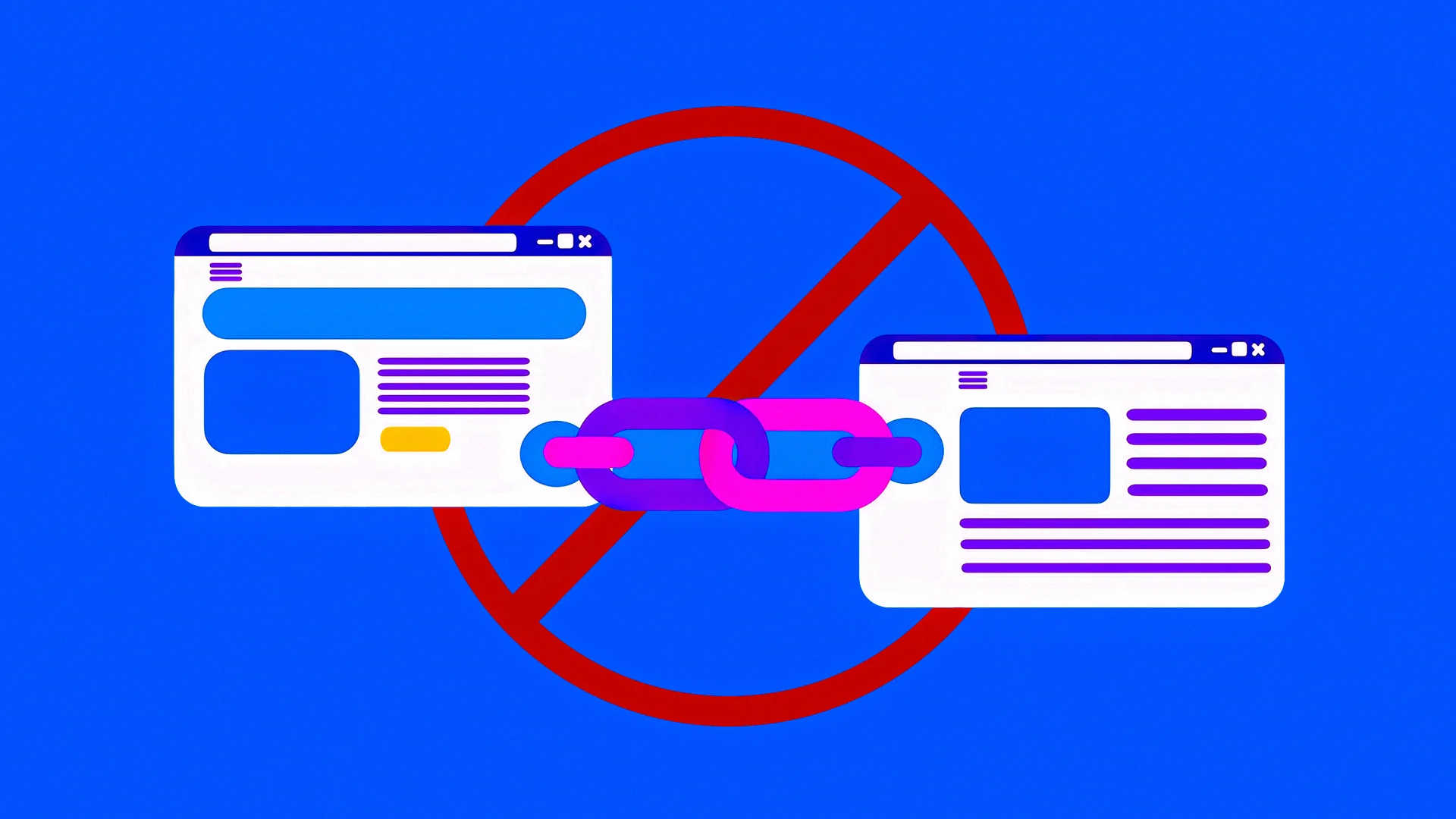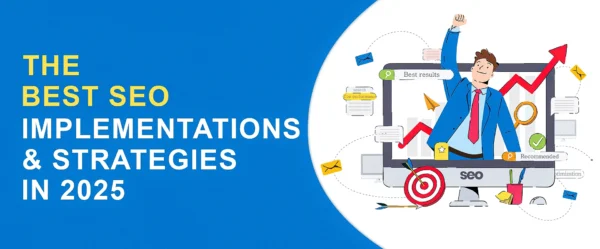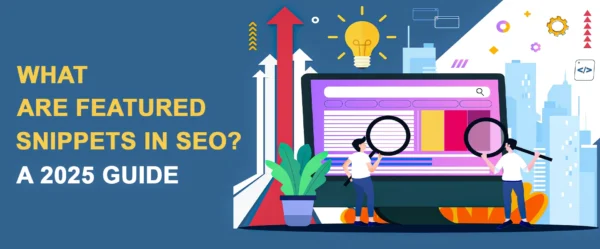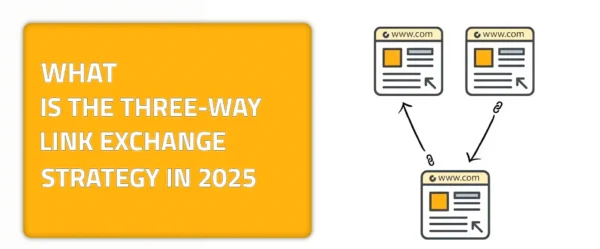Understanding the main aspects of anything related to SEO is something that will help you get you website where you want it exactly. And with that, let me introduce to you reciprocal links. What are those? I know that we’ve discussed them briefly in 2023; however, this is the updated and most detailed guide that will help you understand what are reciprocal links and what importance do they hold in the SEO realm. You know, I can use the following phrase to sum up reciprocal links and say that it’s kind of like “you scratch my back, I’ll scratch yours.” I know not the most technical or romantic phrase to use but hey! It’s all about meeting each others needs and standards. This is a digital collaboration that has been helping people raise their websites to new levels of success. On the surface of it all, the concept is straightforward: two websites agree to link each other and create a mutual exchange of traffic and credibility. Imagine the following with me. Picture a fitness coach that has a blog and links it to a meal prep service for healthy routines.
And vice versa with the meal prep service linking back to that coach’s blog. If you look at it, you’ll find that it’s considered a win-win situation where each party gets to tap into the other’s audience all while boosting their own visibility to empower each other with better credibility. So what’s beneath the surface? Beneath it all you’ll find that this simple arrangement and collaboration has a complex web of SEO complications that you need to understand in order to collaborate efficiently with the right websites. Reciprocal links are more than just friendly exchanges.
Having The Full Understanding of Reciprocal Links
Search engines like Google inspect these connections for relevance, authenticity, and, let’s be honest, ulterior and underlying motives. Are these links genuinely valuable to users, or are they just a sneaky tactic to manipulate rankings? This is a tool that can help you but only if you use it ethically. Abuse reciprocal links and you’ll find yourself facing Google’s penalty wrath, something that every webmaster tends to fear when they understand what such a negative thing can do to their beloved website. In this guide we will delve into the many aspects of reciprocal links and their rightful usages. Additionally, get to understand whether or not they are still of importance and what value can they add to your website in the digital realm of 2025 and SEO. Ready to take this on? Let’s hit it.
The Evolution of Reciprocal Links in SEO
Reciprocal links have had quite the journey. Think of them as the rockstars of early SEO who’ve gone through wild, rebellious years and eventually cleaned up their act to stay relevant. Much like The Beatles and how they were known back in the day as The Quarrymen, weird I know! Back in the day, they were like candy piñata at a kid’s birthday party. This is one object that everyone wanted to beat as many times as they could to grab the largest candy amounts, and the more, the merrier. It wasn’t uncommon to see websites swapping links like trading cards, with little regard for whether those links actually made sense.
A blog about gardening might link to a car dealership, and no one batted an eye or gave it any kind of attention. But those were simpler times when search engines weren’t as sharp in their recognition, and algorithms didn’t have the sophisticated sniffer SEO police dogs that they have today. I mean I love German Shepherds but in the digital realm? One has to be careful.
Fast forward to 2025, and it’s a whole new digital game. Search engines like Google have evolved into unmerciful judges. Ones who are hyper-focused on the why behind each link. Was the exchange made to genuinely enhance the user’s experience, or is it just another shortcut to climb the rankings ladder faster? Today, reciprocal links are under the microscope, with context and relevance taking the spotlight on stage. Imagine this: a pet grooming site links to a dog training blog. That’s a natural, mutually beneficial pairing. One that is considered a golden ticket in the world of reciprocal linking.
Want to Shift and Reverse Things Around and See What Happens?
Now, imagine that same pet grooming site linking to a cryptocurrency exchange. Unless dogs have suddenly started investing in Bitcoin without me or you knowing, this is a glaring mismatch that screams “dangerous collaborations.” I for sure still am certain that Elon Musk didn’t come up with robotic dogs that neither need grooming nor have the capability to invest in Bitcoins.
Long story short? Reciprocal links are far from dead, but they’ve grown up. They have matured into a refined, context-driven tool. One that demands thoughtfulness and strategy to start with. It’s no longer about quantity; it’s about quality and intent. Two things that matter greatly in the today’s SEO digital realm. Additionally, when you execute them correctly, these links can still play a starring role in your SEO strategy. Keep in mind that it is obligatory that you respect the rules of the game.
The Many Benefits of Using Reciprocal Links
So, what’s in it for you? I mean we all tend to want to know what benefits will we get from something if we proceed with it, am I right? The question remains: Are reciprocal links worth the effort in today’s SEO landscape? The answer is a resounding yes. One that I say with a 100% positive attitude. But hey, let me warn you and tell you that the “yes” comes only if you play your cards right. What does that mean though? Let me tell you. These links can act as a networking handshake in the digital realm. It fosters relationships with other websites in your niche and empowers everyone in the realm. Imagine a travel blogger linking to a boutique hotel’s website, which then links back. This simple exchange not only boosts the visibility of both parties but also provides real value to their audiences. But wait, there’s more to it than you think!
Here is How Reciprocal Links Can Help
- Expand Your Reach: Partnering with a website in your niche allows you to reach out with your brand or services to their audience. This gives your content the chance to shine in front of readers who may not have discovered you without that linking collaboration. For example, if you run a travel blog and link to a local tour operator’s site (and they link back), both parties benefit from increased visibility among highly relevant audiences.
- Improve User Experience: Thoughtfully placed links act as helpful signposts. Ones that direct readers to additional resources that align with their needs and interests. When you do it correctly, reciprocal links create a great journey for users, making them feel like they’re being guided rather than shuffled around. For example, a blog post about no-code and low code technological advancements that links to a no-code app builder that offers these app creation services ensures readers get a full-circle solution.
- Build Credibility: Quality reciprocal links are like virtual endorsements. When your site links to another reputable website and they link back, it signals to both users and search engines that you’re part of a trusted network. Search engines interpret this as a vote of confidence. One that can help improve your rankings. Moreover, users are more likely to see you as an authority in your niche if they notice you’re connected to other credible and reputable sites.
Potential Risks of Reciprocal Links
Let’s talk about the dark side of reciprocal links. Because we all know that where pros lies, you might tangle upon some cons as well. Let’s delve into the dark and most chaotic corner of SEO. This is where things can quickly spiral out of control and we wouldn’t want that, would we? Imagine it like overeating at an all-you-can-eat buffet: piling your plate high seems exciting at first, but by the end, you’re regretting every last bite (that is if you can stomach it). Overloading your site with reciprocal links, especially irrelevant ones, is the SEO equivalent of a stomach ache that you’re likely to have when you eat that full-on plate. Simply put, it’s like shouting to Google, “Hey, look at me! I’m gaming and tricking the system!” The spoiler here is that Google would find that as funny as one of the dad jokes we get from our dads. Yes, those jokes that they are the only ones that get to laugh about them.
Search engines in 2025 are no pushovers. They’ve evolved into highly perceptive entities. Ones that are capable of spotting unnatural linking patterns faster than you can blink. Manipulative tactics, like stuffing your site with irrelevant reciprocal links, could land you in SEO jail, and trust me, getting out of that isn’t as easy as you think. For example, let’s say a fashion blog links to a tech repair site just because they agreed to trade links. Not only does this confuse your readers (“Wait, what does fixing a laptop have to do with a vintage Marilyn Monroe dress inspo piece?”), but it also makes Google suspicious. And when Google gets suspicious, hide. Because this is when your rankings take a dramatic nosedive.
Understanding How to Dodge Such Challenge and Risks
I know how you may be thinking, “great now she’s just listing risks and challenges and giving us no solutions to work with.” However, patience is the key to loving my content and learning from it, so here are the top ways that can help you steer clear of these pitfalls. All you have to do is follow a few golden rules that I have up my sleeve for you:
- Stick to partnerships that are authentic and genuinely beneficial. Don’t just agree to any site. Make sure that the site to link to is one that is credible and known in the realm and just another underground site.
- Ensure that the links are relevant to your audience and add value to their experience. Don’t ever link to a site that is not relevant to your niche. This will only confuse your readers and cause you to lose your credibility, reputation, and maybe even your ranking.
- Avoid link exchanges that feel forced, random, or out of context.
Reciprocal links are like a sharp tool that can work wonders when you use them correctly, but misuse them, and they might backfire at you and the consequences will be ones that you cannot handle. Advice from the tech and SEO wise? You may want to borrow some wisdom from Spider-Man’s Uncle Ben, “With great power comes great responsibility.” So, use that power wisely. Because your SEO strategy (as well as your sanity) depends on it.
Best Practices for Reciprocal Linking in 2025
Now, let’s focus on the art of doing it right. Reciprocal links in 2025 are all about finesse. First and foremost, you need to vet your potential link partners carefully. Are they reputable? Is their content relevant to yours? Do they have a good domain authority? Partnering with quality sites is non-negotiable. And if one of the answers of the questions above is a no, then reconsider these websites or domains that you’re considering.
Another tip? Don’t make it too obvious. What do I mean with that? Let me tell you. A sudden flood of reciprocal links on your site might trigger alarm bells with search engines. Instead, aim for a natural and gradual approach. And remember, it’s not just about adding a link—it’s about adding valuable link that adds value to your domain. For example, if you’re a food blogger linking to a farm-to-table recipe site, ensure the link is embedded in a well-thought-out context, like a recipe for homemade sourdough bread featuring farm-fresh ingredients.
Think of reciprocal linking like planting a garden: you need to choose the right plants (partners), ensure they complement each other (relevance), and regularly tend to them (monitoring and optimizing). Neglect one aspect or step in this process, and you’ll end up with a wild, unproductive mess that will be so hard to go back from.
Examples of Effective Reciprocal Links
Let’s bring this to life with some real-world inspiration:
- Local Partnerships: A yoga studio links to a nearby smoothie bar’s website, which links back. This not only promotes health and wellness but also builds a local community for readers.
- Cross-Niche Collaboration: A photography blog links to a travel site showcasing picturesque destinations, creating a natural synergy and exposing both services to readers and domain visitors.
- E-commerce and Content: A gadget review blog can link to an online store selling the featured products. This will help in enhancing the reader’s journey and guiding them efficiently on where to buy these gadgets.
To make these links work, remember:
- Keep the exchange relevant and user-focused.
- Monitor the quality of the partner’s site over time.
- Avoid linking to sites that have low domain authority and may look like they engage in spammy practices.
How to Monitor and Optimize Reciprocal Links
Once your reciprocal links are in place, the job isn’t over—far from it. Don’t be frustrated though. Because this is where the real magic begins. Because monitoring and optimizing these links can make or break your strategy. So, it’s important that you focus on this process. It’s like tending to a garden; you’ve planted the seeds, but now you need to water, prune, and nurture them to see results. You can start this procedure by using tools like SEMrush, Moz, or Ahrefs. These tools will help you keep track of how your links are performing. Are they driving quality traffic? Are they boosting your search rankings or just sitting there, looking pretty in numbers? If a link isn’t pulling its weight, it might be time for having a little link detox drink. One that will help you essentially with cutting ties with underperforming or irrelevant links.
It doesn’t stop there. Keep a vigilant eye on your partner sites. The digital world is ever-changing, and the site you partnered with last year might no longer maintain its quality or relevance. If your partner’s content becomes outdated or, worse, spammy, their link could become a liability. Regular audits—monthly or quarterly—can act as your safety net, ensuring that your reciprocal link portfolio remains an asset rather than a ticking time bomb.
Remember, SEO is a dynamic field, much like fashion trends or tech gadgets; what’s in today might be out tomorrow. So don’t be afraid to tweak your approach. Add or remove links, refresh your anchor texts, and always align your strategy with the latest best practices. Think of your reciprocal links as a living ecosystem, one that thrives on attention and adaptability. When done right, they can transform your SEO strategy from ordinary to extraordinary.
Wrapping It Up!
Reciprocal links are like that dependable friend who always has your back—but only if you’re equally dependable in return. In 2025, these links remain a valuable piece of the SEO puzzle, provided you approach them with strategy, finesse, and a commitment to quality. They’re not just a set-it-and-forget-it tool; they require regular care, ethical intent, and an understanding of your audience’s needs.
When done well, reciprocal links can amplify your visibility, enhance your credibility, and help build a network of digital allies. But the rules have changed. This isn’t the wild west of SEO anymore; it’s a highly refined field where authenticity and relevance reign supreme. Whether you’re connecting with a like-minded blogger, a complementary business, or a niche authority site, the key is to focus on links that genuinely add value for both parties involved.
So, are reciprocal links worth it? Absolutely, as long as you’re willing to put in the work. Ready to elevate your SEO strategy and make smarter connections? Check out linkexchange.ai today. With tools and insights tailored for ethical link building, we’re here to help you build better links and better relationships. Take it step by step with our domain and let it be one click at a time.


